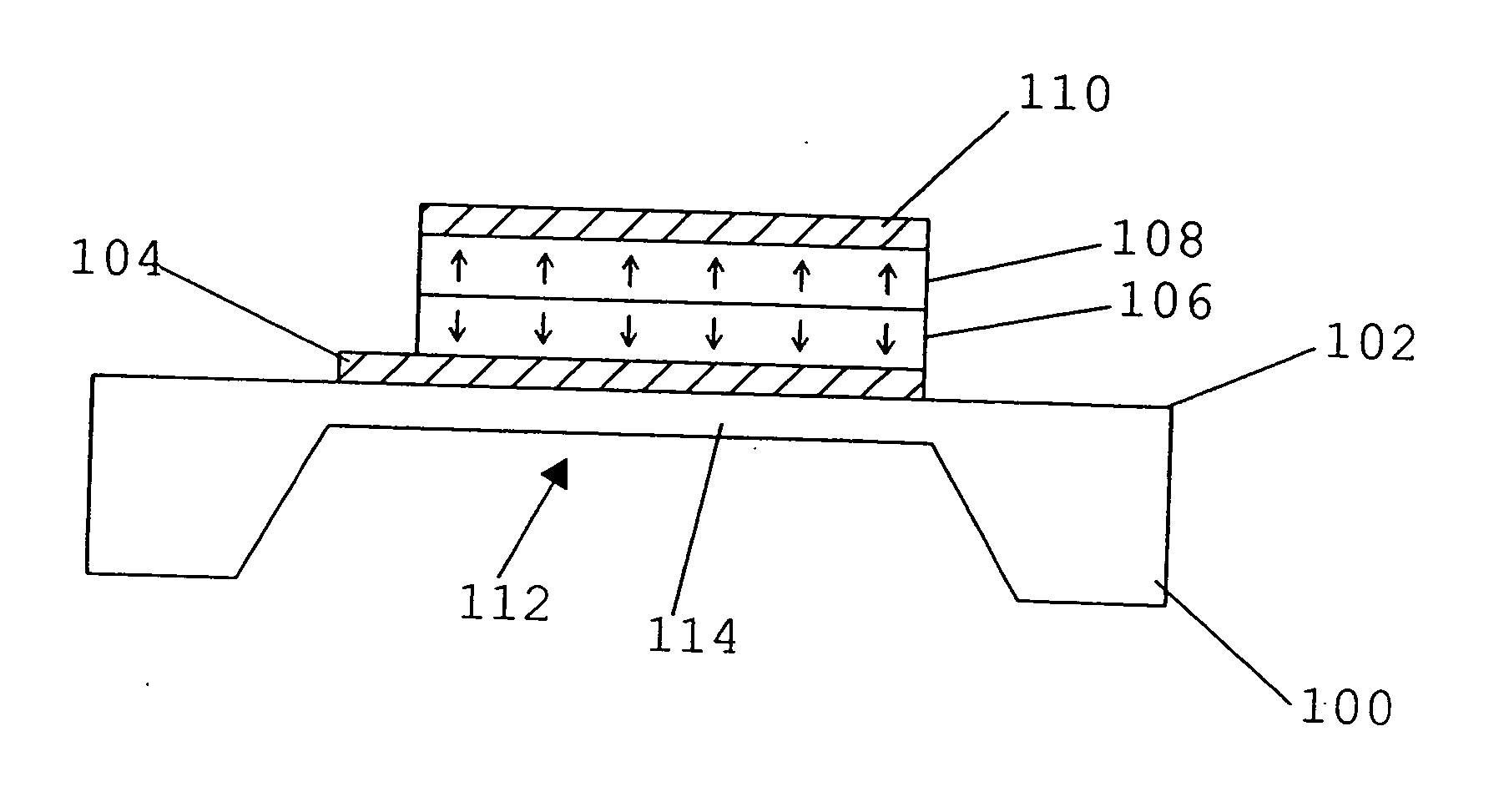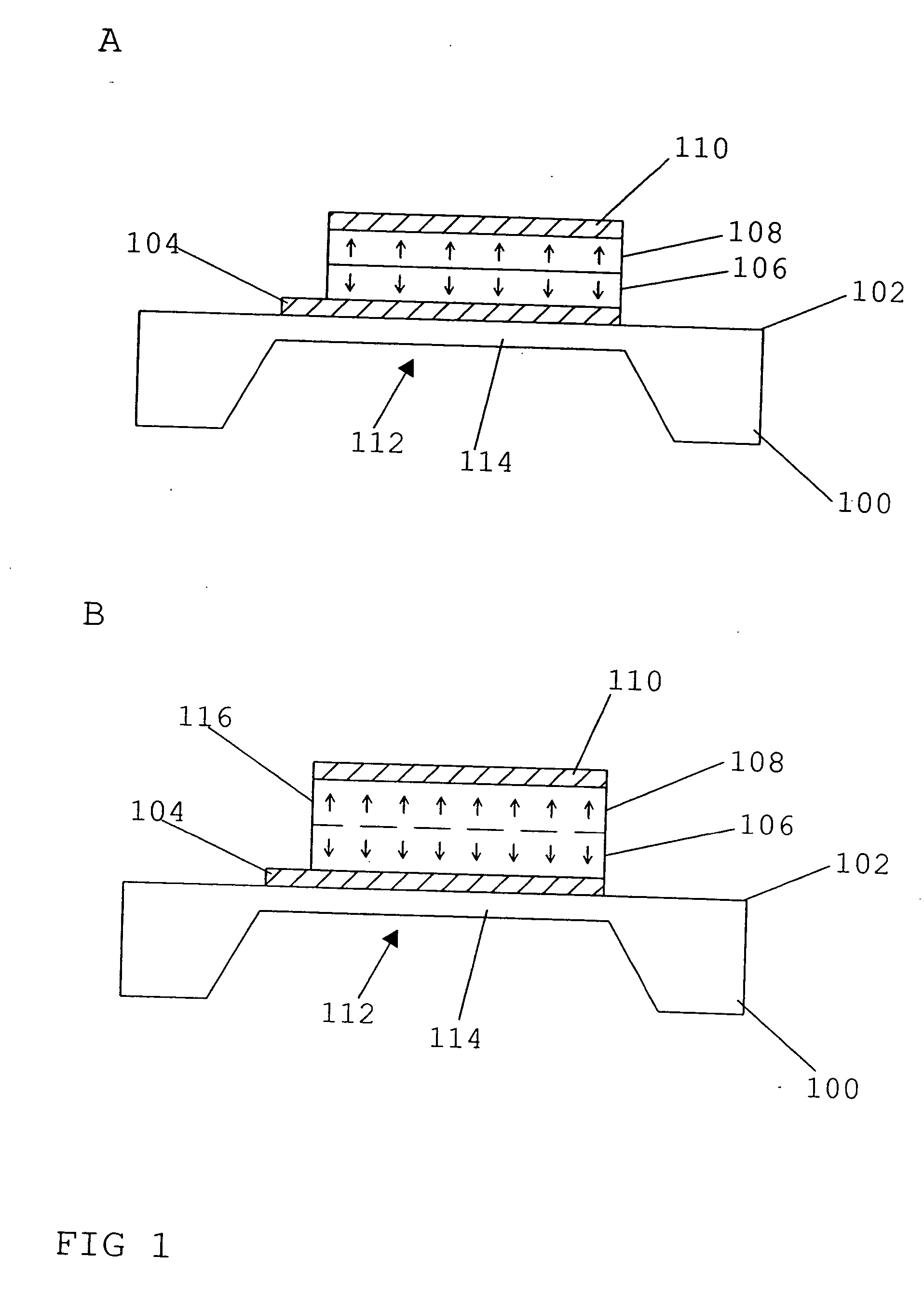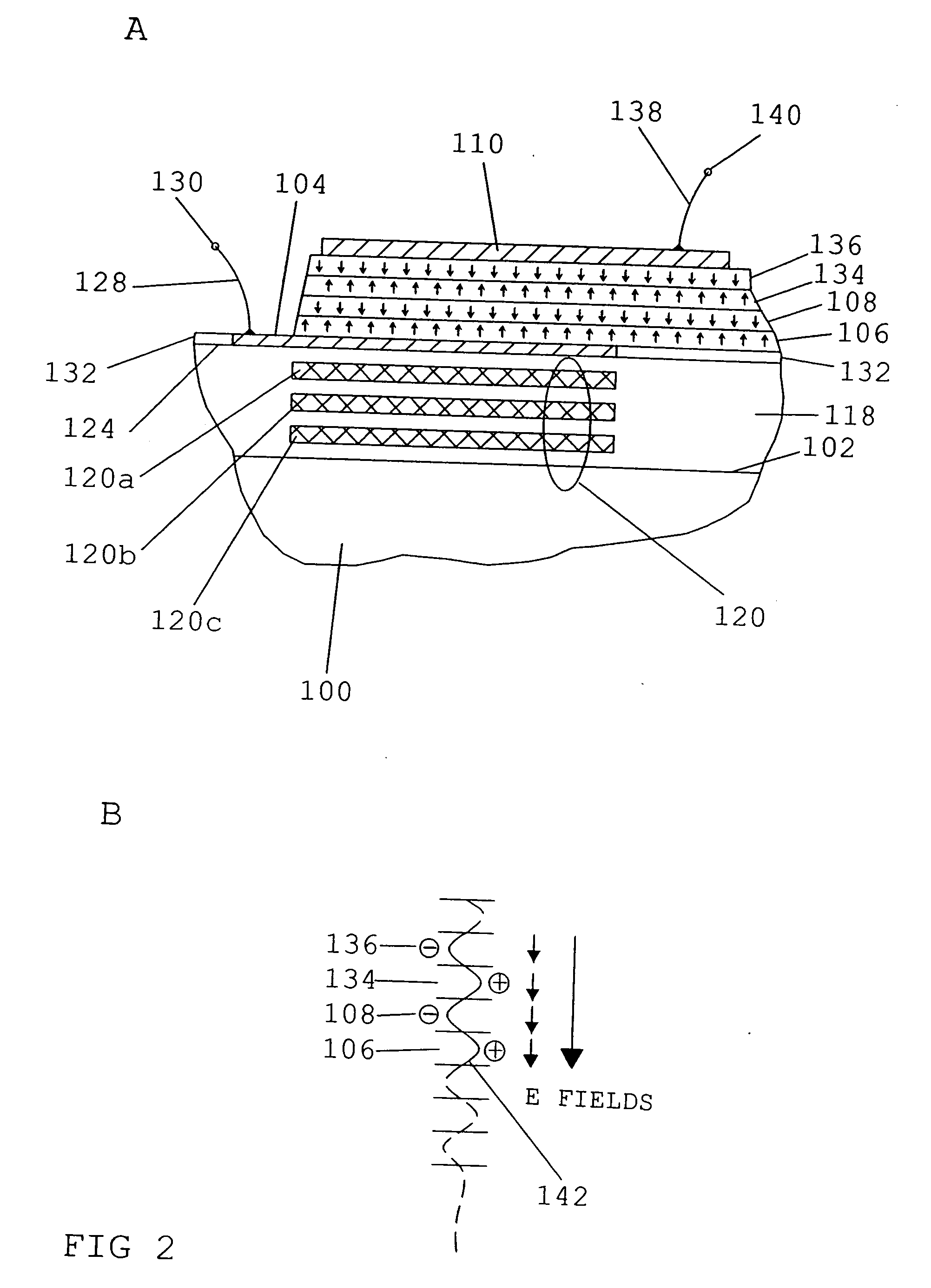BAW resonator
a resonator and waveform technology, applied in the direction of impedence networks, electric devices, etc., can solve the problems of unbalanced/balanced signals that cannot be balanced/unbalanced, piezolayers whose thicknesses are extremely thin, and cannot be balanced/unbalanced, so as to increase the scope of possible applications and increase the available frequency range.
- Summary
- Abstract
- Description
- Claims
- Application Information
AI Technical Summary
Benefits of technology
Problems solved by technology
Method used
Image
Examples
first embodiment
FIG. 1A shows a BAW resonator in accordance with the present invention. The BAW resonator includes a substrate 100 comprising a first main surface 102 which has a first lead electrode 104 made of a metal or another conductive material formed thereon. Electrode 104 has a first piezoelectric layer 106 arranged thereon, which, in turn, has a second piezoelectric layer 108 arranged thereon. A second electrode 110 made of a metal or another conductive material is arranged on the piezoelectric layer 108. The first electrode 104 is, for example, an input electrode, and the second electrode 110 is, for example, an output electrode. Substrate 100 includes a recess 112 for forming a diaphragm area 114 which has the BAW resonator formed thereon so as to label acoustic decoupling of the resonator from underlying elements and / or layers. Alternatively, decoupling may also be achieved by a so-called acoustic reflector which would then be arranged between substrate 100 and electrode 104. Both decou...
second embodiment
FIG. 1B represents the inventive BAW resonator, which embodiment differs from the embodiment described with reference to FIG. 1A in that a piezoelectric material 116 is arranged between electrodes 104 and 110 instead of the two separated piezoelectric layers 106 and 108. Thus, only one piezoelectric layer 116 is provided. However, layer 116 is made such that it comprises a first portion 106 and a second portion 108, in which the alignments or orientations (polarization) of the material of the piezoelectric layer 116 are mutually opposed, as is shown by the arrows. The various portions are separated by the dashed line in FIG. 1B.
The layer 116 shown in FIG. 1B is made, for example, such that the first portion 106 is initially grown using process parameters enabling the alignment shown there. Subsequently, the second portion 108 is grown to the thus produced portion 106, using other process parameters so as to achieve the opposed orientation in portion 108, FIG. 1B. In this case, the ...
PUM
| Property | Measurement | Unit |
|---|---|---|
| frequencies | aaaaa | aaaaa |
| area | aaaaa | aaaaa |
| impedance | aaaaa | aaaaa |
Abstract
Description
Claims
Application Information
 Login to View More
Login to View More - R&D
- Intellectual Property
- Life Sciences
- Materials
- Tech Scout
- Unparalleled Data Quality
- Higher Quality Content
- 60% Fewer Hallucinations
Browse by: Latest US Patents, China's latest patents, Technical Efficacy Thesaurus, Application Domain, Technology Topic, Popular Technical Reports.
© 2025 PatSnap. All rights reserved.Legal|Privacy policy|Modern Slavery Act Transparency Statement|Sitemap|About US| Contact US: help@patsnap.com



